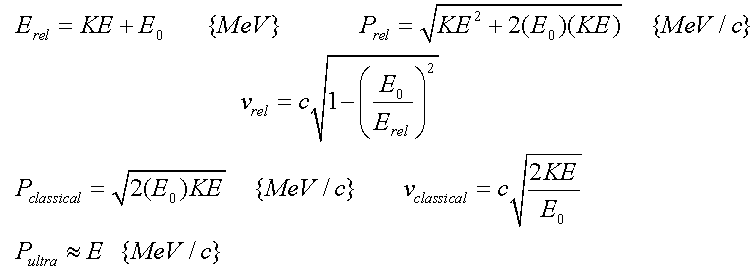|
We will investigate the dynamics of objects
as they move faster and faster, and compare the results with the
classical equations.
There is a "universal speed limit"
of the speed of light - all material objects must go slower than this
speed (only light can go at that speed). Because of this, to make an
object go faster, you have to dump more energy into than you thought
(more than under the classical rules).
The classical curve is plotted in red.
The c speed limit is the horizontal blue line. The relativistic
(correct) line is black.
You can change the parameters below, to
investigate the results. Your current configuration is shown as the
blue dot on the graph.
|
Choose which configuration :
Set the initial parameters of the
particle:
Electron
Proton
KE =
MeV
|

